Edited Books
- Eppur si muove: Doing History and Philosophy of Science with Peter Machamer
(with Adams, Marcus P. and Feest, Uljana and Sullivan, Jacqueline A.)
Springer (2017)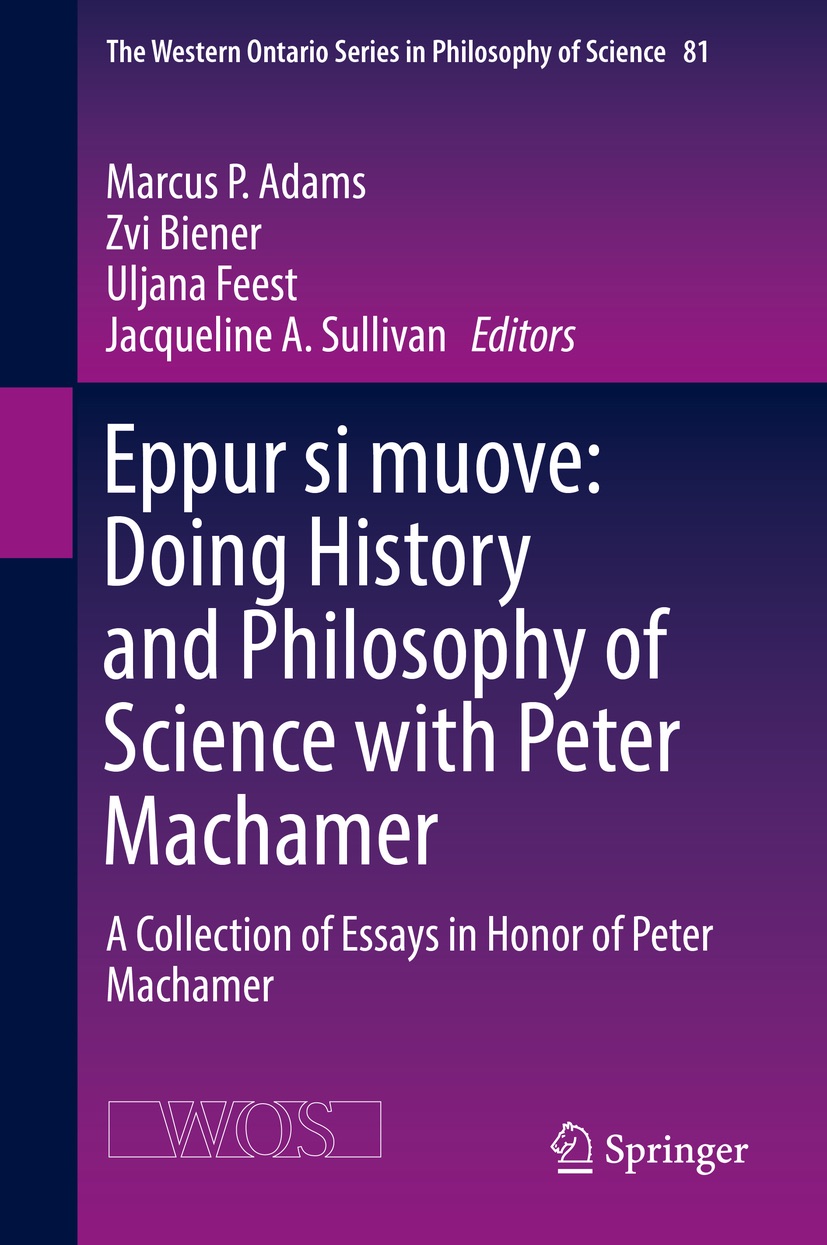
@book{AdamsBienerFeestSullivan2017, amazon = {https://www.amazon.com/Eppur-muove-Philosophy-Machamer-Collection-ebook/dp/B06XTLVJLS}, booktitle = {\emph{Eppur si muove}: Doing History and Philosophy of Science with Peter Machamer}, category = {Secondary}, date = {2017}, editor = {Adams, Marcus P. and Biener, Zvi and Feest, Uljana and Sullivan, Jacqueline A.}, publisher = {Springer}, series = {The Western Ontario Series in Philosophy of Science} }Adams, Marcus P., Zvi Biener, Uljana Feest, and Jacqueline A. Sullivan, eds. 2017. Eppur Si Muove: Doing History and Philosophy of Science with Peter Machamer. The Western Ontario Series in Philosophy of Science. Springer.
This volume is a collection of original essays focusing on a wide range of topics in the History and Philosophy of Science. It is a festschrift for Peter Machamer, which includes contributions from scholars who, at one time or another, were his students. The essays bring together analyses of issues and debates spanning from early modern science and philosophy through the 21st century. Machamer’s influence is reflected in the volume’s broad range of topics. These include: underdetermination, scientific practice, scientific models, mechanistic explanation in contemporary and historical science, values in science, the relationship between philosophy and psychology, experimentation, supervenience and reductionism. - Newton and Empiricism
(with Schliesser, Eric)
Oxford University Press (2014)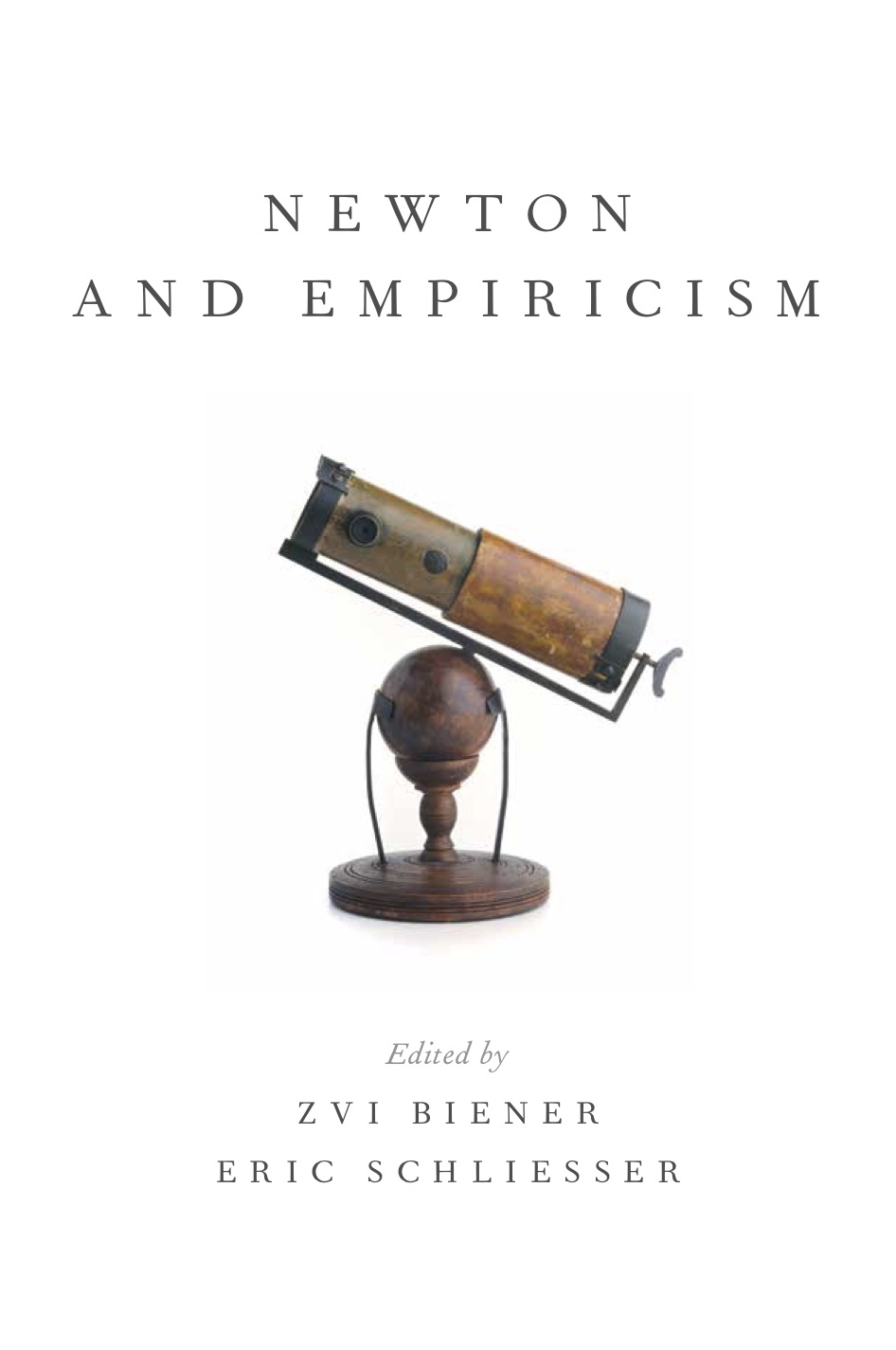
@book{Biener2014a, address = {Oxford}, amazon = {https://www.amazon.com/Newton-Empiricism-Zvi-Biener/dp/0199337098}, booktitle = {Newton and Empiricism}, category = {Secondary}, date = {2014}, editor = {Biener, Zvi and Schliesser, Eric}, publisher = {Oxford University Press}, annote = {Review by Patrick Connolly} }Biener, Zvi, and Eric Schliesser, eds. 2014. Newton and Empiricism. Oxford: Oxford University Press.
This volume of original papers by a leading team of international scholars explores Isaac Newton’s relation to a variety of empiricisms and empiricists. It includes studies of Newton’s experimental methods in optics and their roots in Bacon and Boyle; Locke’s and Hume’s responses to Newton on the nature of matter, time, the structure of the sciences, and the limits of human inquiry. In addition it explores the use of Newtonian ideas in 18th-century pedagogy and the life sciences. Finally, it breaks new ground in analyzing the method of evidential reasoning heralded by the Principia, its nature, strength, and development in the subsequent three centuries of gravitational research. The volume will be of interest to historians of science and philosophy and philosophers interested in the nature of empiricism.
Articles
- Working Hypothesis, Mathematical Representation, and the Logic of Theory Mediation in Newton’s Principia
(with Domski, Mary)
In Theory, Evidence, Data: the Philosophical Legacy of George E. Smith, Springer (forthcoming)
@incollection{BienerDomski2023, author = {Biener, Zvi and Domski, Mary}, booktitle = {Theory, Evidence, Data: the Philosophical Legacy of George E. Smith}, category = {Secondary}, date = {forthcoming}, editor = {Smeenk, Chris and Stan, Marius}, publisher = {Springer}, series = {Boston Studies in the Philosophy and History of Science}, title = {Working Hypothesis, Mathematical Representation, and the Logic of Theory Mediation in Newton's Principia} }Biener, Zvi, and Mary Domski. 0AD. “Working Hypothesis, Mathematical Representation, and the Logic of Theory Mediation in Newton’s Principia.” In Theory, Evidence, Data: the Philosophical Legacy of George E. Smith, edited by Chris Smeenk and Marius Stan. Boston Studies in the Philosophy and History of Science. Springer.
In this paper we use George E. Smith’s notion of ‘working hypotheses’ to explicate the logic of theory mediation in Newton’s Principia. While much work on theory mediation focuses on how theory-mediated measurements fix theoretical parameters, we focus on how they allow phenomena to be constituted and individuated. This lets us locate in Smith’s work two types of evidence to which working hypotheses can appeal: what we call ‘conditional and ‘independent’ evidence. Considering their relative merits allows us to extend Smith’s account of theory-mediation. Ultimately, we argue that Smith’s nuanced portrait of Newton’s non-Cartesian methodology opens up a way of appreciating how choices of mathematical formalism can themselves be considered working hypotheses. - Mechanics in Newton’s Wake
(with Hepburn, Brian )
In The Cambridge History of Philosophy of the Scientific Revolution, Cambridge University Press (2022)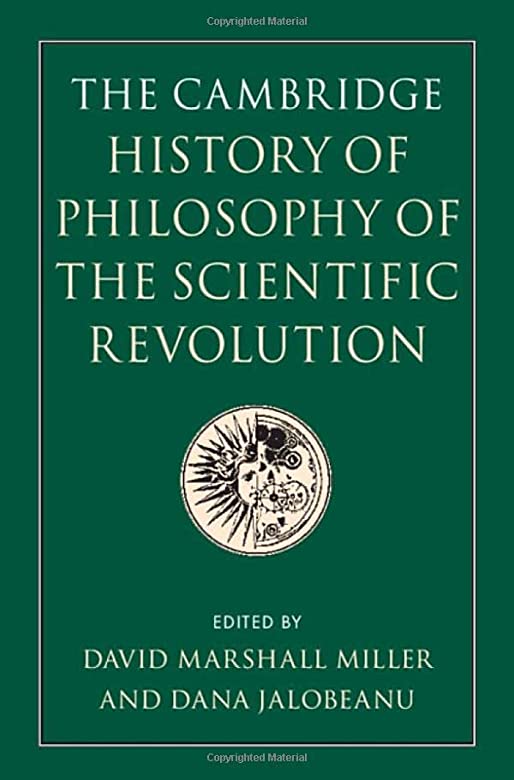
@incollection{Hepburn2022a, author = {Hepburn, Brian and Biener, Zvi}, booktitle = {The Cambridge History of Philosophy of the Scientific Revolution}, category = {Secondary}, date = {2022}, doi = {10.1017/9781108333108.018}, editor = {Jalobeanu, Dana and Miller, David M.}, pages = {293--312}, publisher = {Cambridge University Press}, title = {Mechanics in Newton’s Wake}, bdsk-url-1 = {https://doi.org/10.1017/9781108333108.018} }Hepburn, Brian, and Zvi Biener. 2022. “Mechanics in Newton’s Wake.” In The Cambridge History of Philosophy of the Scientific Revolution, edited by Dana Jalobeanu and David M. Miller, 293–312. Cambridge University Press. https://doi.org/10.1017/9781108333108.018.
Newton’s remarkable achievements in planetary theory and dynamics were followed by a century of equally remarkable advances in the generalized science of forces acting on bodies in motion. Far from merelyformalizing the Newtonian framework, these advances aimed at solving deep problems left in Newton’s wake. First, Newtonian theory focused on centripetal forces, which are not characteristic of motion under arbitrary constraints or bodily deformation due to pressure and stress. Second, Newton’s attempts at fluid mechanics made clear that media could not be adequately analyzed using strategies developed for point-particles. Both considerations suggested that different forms of body required different analytical and conceptual tools. They required the formulation of generalized principles flexible enough to treat heterogeneous material configurations, but stringent enough to preserve the unity of mechanics as a study of matter and motion. Ultimately, Newton’s successors established a new discipline, analytical mechanics. Its primary object of investigation was the functional representation of the invariant relations behind dynamic phenomena, not the geometric representation of trajectories. The philosophical suppositions behind the new mechanics constituted a new mechanical philosophy, but one that hearkened back to, and completed the project of, the mechanical philosophy of the mid-seventeenth century. - Divergence of values and goals in participatory research
(with Dunlap, Lucas Corris, Amanda and Jacquart, Melissa and and Potochnik, Angela)
Studies in History and Philosophy of Science Part A (2021)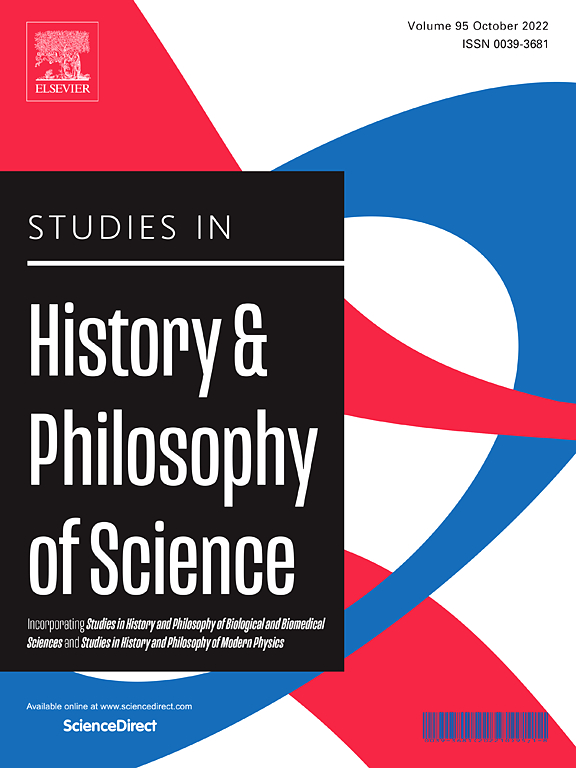
@article{DUNLAP2021284, author = {Dunlap, Lucas and Corris, Amanda and Jacquart, Melissa and Biener, Zvi and Potochnik, Angela}, category = {Secondary}, date = {2021}, doi = {10.1016/j.shpsa.2021.06.015}, issn = {0039-3681}, journal = {Studies in History and Philosophy of Science Part A}, keywords = {Participatory research, Norms of collaboration, Citizen science, Values and goals, Community science}, pages = {284--291}, title = {Divergence of values and goals in participatory research}, volume = {88}, year = {2021}, bdsk-file-1 = {YnBsaXN0MDDSAQIDBFxyZWxhdGl2ZVBhdGhZYWxpYXNEYXRhXxDPLi4vLi4vLi4vLi4vLi4vVXNlcnMvenZiMS9MaWJyYXJ5L0Nsb3VkU3RvcmFnZS9PbmVEcml2ZS1Vbml2ZXJzaXR5b2ZDaW5jaW5uYXRpL1JlZmVyZW5jZS9CaWJkZXNrL1NlY29uZGFyeS9EdW5sYXAuTDtDb3JyaXMuQS9EdW5sYXBDb3JyaXMgLSBEaXZlcmdlbmNlIG9mIHZhbHVlcyBhbmQgZ29hbHMgaW4gcGFydGljaXBhdG9yeSByZXNlYXJjaCAoMjAyMSkucGRmTxEDBgAAAAADBgACAAAITW9udGVyZXkAAAAAAAAAAAAAAAAAAAAAAAAAAAAAAEJEAAH/////H0R1bmxhcENvcnJpcyAtIERpdiNGRkZGRkZGRi5wZGYAAAAAAAAAAAAAAAAAAAAAAAAAAAAAAAAAAAAAAAAAAP////8AAAAA////////////////AAAKIGN1AAAAAAAAAAAAAAAAABFEdW5sYXAuTDtDb3JyaXMuQQAAAgDCLzpVc2Vyczp6dmIxOkxpYnJhcnk6Q2xvdWRTdG9yYWdlOk9uZURyaXZlLVVuaXZlcnNpdHlvZkNpbmNpbm5hdGk6UmVmZXJlbmNlOkJpYmRlc2s6U2Vjb25kYXJ5OkR1bmxhcC5MO0NvcnJpcy5BOkR1bmxhcENvcnJpcyAtIERpdmVyZ2VuY2Ugb2YgdmFsdWVzIGFuZCBnb2FscyBpbiBwYXJ0aWNpcGF0b3J5IHJlc2VhcmNoICgyMDIxKS5wZGYADgCmAFIARAB1AG4AbABhAHAAQwBvAHIAcgBpAHMAIAAtACAARABpAHYAZQByAGcAZQBuAGMAZQAgAG8AZgAgAHYAYQBsAHUAZQBzACAAYQBuAGQAIABnAG8AYQBsAHMAIABpAG4AIABwAGEAcgB0AGkAYwBpAHAAYQB0AG8AcgB5ACAAcgBlAHMAZQBhAHIAYwBoACAAKAAyADAAMgAxACkALgBwAGQAZgAPABIACABNAG8AbgB0AGUAcgBlAHkAEgDAVXNlcnMvenZiMS9MaWJyYXJ5L0Nsb3VkU3RvcmFnZS9PbmVEcml2ZS1Vbml2ZXJzaXR5b2ZDaW5jaW5uYXRpL1JlZmVyZW5jZS9CaWJkZXNrL1NlY29uZGFyeS9EdW5sYXAuTDtDb3JyaXMuQS9EdW5sYXBDb3JyaXMgLSBEaXZlcmdlbmNlIG9mIHZhbHVlcyBhbmQgZ29hbHMgaW4gcGFydGljaXBhdG9yeSByZXNlYXJjaCAoMjAyMSkucGRmABMAAS8AABUAAgAL//8AAAAIAA0AGgAkAPYAAAAAAAACAQAAAAAAAAAFAAAAAAAAAAAAAAAAAAAEAA==} }Dunlap, Lucas, Amanda Corris, Melissa Jacquart, Zvi Biener, and Angela Potochnik. 2021. “Divergence of Values and Goals in Participatory Research.” Studies in History and Philosophy of Science Part A 88: 284–91. https://doi.org/10.1016/j.shpsa.2021.06.015.
Public participation in scientific research has gained prominence in many scientific fields, but the theory of participatory research is still limited. In this paper, we suggest that the divergence of values and goals between academic researchers and public participants in research is key to analyzing the different forms this research takes. We examine two existing characterizations of participatory research: one in terms of public participants’ role in the research, the other in terms of the virtues of the research. In our view, each of these captures an important feature of participatory research but is, on its own, limited in what features it takes into account. We introduce an expanded conception of norms of collaboration that extends to both academic researchers and public participants. We suggest that satisfying these norms requires consideration of the two groups’ possibly divergent values and goals, and that a broad characterization of participatory research that starts from participants’ values and goals can motivate both public participants’ role in the research and the virtues of the research. The resulting framework clarifies the similarities and differences among participatory projects and can help guide the responsible design of such projects. - Definition more geometrarum and Newton’s scholium on space and time
Studies in History and Philosophy of Modern Physics (2020)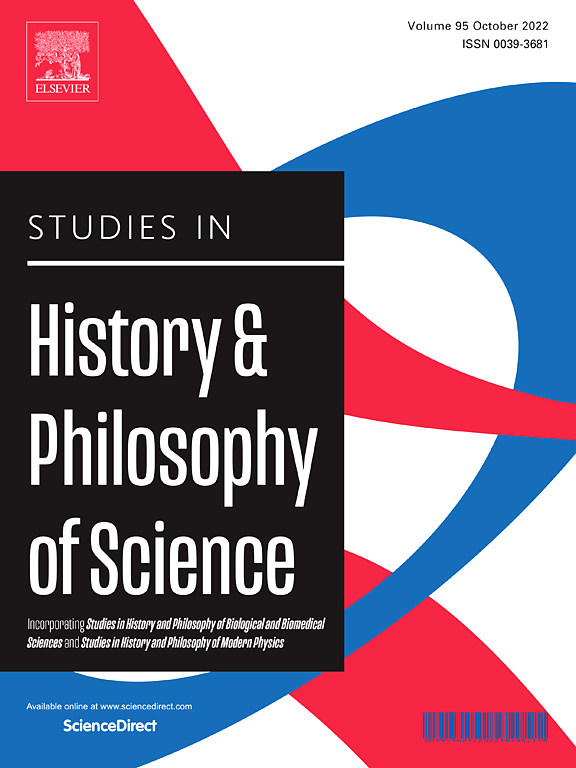
@article{Biener2020a, author = {Biener, Zvi}, category = {Secondary}, date = {2020}, date-modified = {2023-09-10 07:55:03 -0400}, doi = {10.1016/j.shpsb.2020.05.005}, journal = {Studies in History and Philosophy of Modern Physics}, pages = {169-191}, title = {Definition \emph{more geometrarum} and Newton's scholium on space and time}, volume = {72}, bdsk-url-1 = {https://doi.org/10.1016/j.shpsb.2020.05.005} }Biener, Zvi. 2020. “Definition More Geometrarum and Newton’s Scholium on Space and Time.” Studies in History and Philosophy of Modern Physics 72: 169–91. https://doi.org/10.1016/j.shpsb.2020.05.005.
Newton’s Principia begins with eight formal definitions and a scholium, the so-called scholium on space and time. Despite a history of misinterpretation, scholars now largely agree that the purpose of the scholium is to establish and defend the definitions of key concepts. There is no consensus, however, on how those definitions differ in kind from the Principia’s formal definitions and why they are set-off in a scholium. The purpose of the present essay is to shed light on the scholium by focusing on Newton’s notion and use of definition. The resulting view is developmental. I argue that when Newton first wrote the Principia, he viewed the scholium’s definitions as items of “natural philosophy.” By the time of the third edition, however, he came to view their methodological status differently; he viewed them as belonging to the more qualified “manner of geometers.” I explicate the two methods of natural inquiry and draw out their implications for Newton’s account of space. - Newton’s Regulae Philosophandi
In Oxford Handbook of Isaac Newton, Oxford University Press (2018)
@incollection{Biener2018a, author = {Biener, Zvi}, booktitle = {Oxford Handbook of Isaac Newton}, category = {Secondary}, date = {2018}, editor = {Schliesser, Eric and Smeenk, Chris}, publisher = {Oxford University Press}, title = {Newton's \emph{Regulae Philosophandi}}, bdsk-url-1 = {https://doi.org/10.1093/oxfordhb/9780199930418.013.4} }———. 2018. “Newton’s Regulae Philosophandi.” In Oxford Handbook of Isaac Newton, edited by Eric Schliesser and Chris Smeenk. Oxford University Press.
Newton’s Regulae philosophandi — the rules for reasoning in natural philosophy — are maxims of causal reasoning and induction. This chapter reviews their significance for Newton’s method of inquiry, as well as their application to particular propositions within the Principia. Two main claims emerge. First, the rules are not only interrelated, they defend various facets of the same core idea: that nature is simple and orderly by divine decree, and that, consequently, human beings can be justified in inferring universal causes from limited phenomena, if only fallibly. Second, the rules make substantive ontological assumptions on which Newton’s argument in the Principia relies. Along the way, several standard interpretations of the rules are challenged. - The Certainty, Modality, and Grounding of Newton’s Laws
(with Schliesser, Eric)
Monist (2017)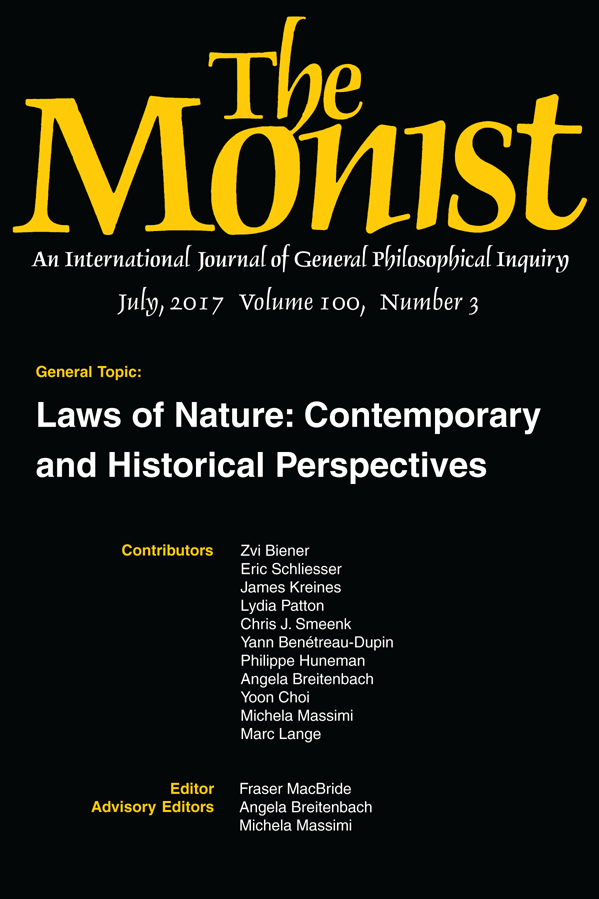
@article{Biener2017a, author = {Biener, Zvi and Schliesser, Eric}, category = {Secondary}, date = {2017}, journal = {Monist}, month = jul, pages = {311-325}, title = {The Certainty, Modality, and Grounding of Newton's Laws}, volume = {100}, bdsk-url-1 = {https://doi.org/10.1093/monist/onx012} }Biener, Zvi, and Eric Schliesser. 2017. “The Certainty, Modality, and Grounding of Newton’s Laws.” Monist 100: 311–25.
Newton began his Principia with three Axiomata sive Leges Motus. We offer an interpretation of Newton’s dual label and investigate two tensions inherent in his account of laws. The first arises from the juxtaposition of Newton’s confidence in the certainty of his laws and his commitment to their variability and contingency. The second arises because Newton ascribes fundamental status both to the laws and to the bodies and forces they govern. We argue the first is resolvable, but the second is not. However, the second tension shows that Newton conceives laws as formal causes of bodies and forces. This neo-Aristotelian conception goes missing in Kantian accounts of laws, as well as accounts that stress laws’ grounding in powers and capacities. - De Gravitatione Reconsidered: The Changing Significance of Experimental Evidence for Newton’s Metaphysics of Space
Journal of the History of Philosophy (2017)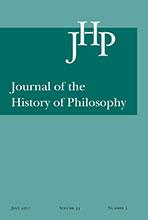
@article{Biener2017b, author = {Biener, Zvi}, category = {Secondary}, date = {2017}, journal = {Journal of the History of Philosophy}, local-url = {/Users/zvb1/Box Sync/Reference/Bibdesk/secondary/Biener.Z/Biener - De Gravitatione Reconsidered The Changing Significance of Experimental (2017).pdf}, number = {4}, pages = {583--608}, title = {\emph{De Gravitatione} Reconsidered: The Changing Significance of Experimental Evidence for Newton's Metaphysics of Space}, volume = {55}, bdsk-url-1 = {https://doi.org/10.1353/hph.2017.0067} }Biener, Zvi. 2017. “De Gravitatione Reconsidered: The Changing Significance of Experimental Evidence for Newton’s Metaphysics of Space.” Journal of the History of Philosophy 55 (4): 583–608.
I argue that Isaac Newton’s De Gravitatione should not be considered an authoritative expression of his thought about the metaphysics of space and its relation to physical inquiry. I establish the following narrative: In De Gravitatione (circa 1668–1684), Newton claimed he had direct experimental evidence for the work’s central thesis: that space had “its own manner of existing” as an affection or emanative effect. In the 1710s, however, through the prodding of both Roger Cotes and G. W. Leibniz, he came to see that this evidence relied on assumptions that his own Principia rendered unjustifiable. Consequently, he (i) revised the conclusions he explicitly drew from the experimental evidence, (ii) rejected the idea that his spatial metaphysics was grounded in experimental evidence, and (iii) reassessed the epistemic status of key concepts in his metaphysics and natural philosophy. The narrative I explore shows not only that De Gravitatione did not constitute the metaphysical backdrop of the Principia as Newton ultimately understood it, but that it was the Principia itself that ultimately lead to the demise of key elements of De Gravitatione. I explore the implications of this narrative for Andrew Janiak’s and Howards Stein’s interpretations of Newton’s metaphysics. - From Kepler to Gibson
(with Raja, Vicente and Chemero, Anthony)
Ecological Psychology (2017)
@article{RajaBienerChemero2017, author = {Raja, Vicente and Biener, Zvi and Chemero, Anthony}, category = {Secondary}, date = {2017}, journal = {Ecological Psychology}, number = {2}, pages = {146-160}, publisher = {Routledge}, title = {From Kepler to Gibson}, volume = {29}, bdsk-url-1 = {https://doi.org/10.1080/10407413.2017.1297186} }Raja, Vicente, Zvi Biener, and Anthony Chemero. 2017. “From Kepler to Gibson.” Ecological Psychology 29 (2): 146–60.
We argue that the idea of embodiment and the strategies for carrying out embodied approaches are some of the most prevalent and interdisciplinary legacies of early modern science. The idea of embodiment is simple: to explain the behavior of bodies, we must understand them as unified wholes in their environments. Embodied approaches eschew explanations in terms of qualitative descriptions of the intrinsic properties of bodies and promote explanation in terms of the interaction between bodies. This idea can be found in Kepler’s optics, Descartes’ physics, and Newton’s physico-mathematics. The Senses Considered as Perceptual Systems (Gibson, 1966) is the culmination of this centuries-long embodiment movement which can be traced back to the 17th century. - Hobbes on the Order of Sciences: A Partial Defese of the Mathematization Thesis
The Southern Journal of Philosophy (2016)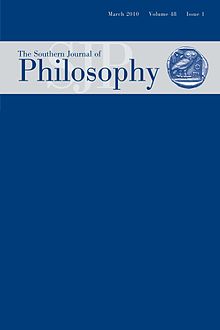
@article{Biener2016e, author = {Biener, Zvi}, category = {Secondary}, date = {2016}, journal = {The Southern Journal of Philosophy}, number = {3}, pages = {312--332}, title = {Hobbes on the Order of Sciences: A Partial Defese of the Mathematization Thesis}, volume = {54} }Biener, Zvi. 2016. “Hobbes on the Order of Sciences: A Partial Defese of the Mathematization Thesis.” The Southern Journal of Philosophy 54 (3): 312–32.
Accounts of Hobbes’s ‘system’ of sciences oscillate between two extremes. On one extreme, the system is portrayed as wholly axiomatic-deductive, with state- craft being deduced in an unbroken chain from the principles of logic and rst philosophy. On the other, it is portrayed as rife with conceptual cracks and ssures, with Hobbes’s statements about its deductive structure amounting to mere window- dressing. This paper argues that a middle way is found by conceiving of Hobbes’s Elements of Philosophy on the model of a mixed-mathematical science, not the model provided by Euclid’s Elements of Geometry. I suggest that Hobbes is a test case for understanding early-modern system-construction more generally, as inspired by the structure of the applied mathematical sciences. This approach has the additional virtue of bolstering, in a novel way, the thesis that the transformation of philosophy in the long seventeenth century was heavily indebted to mathematics, a thesis that has increasingly come under attack in recent years. - Issac Newton (1642–1727)
In Routledge Encyclopedia of Philosophy, Taylor & Francis (2016)
@incollection{Biener2016c, address = {London}, author = {Biener, Zvi}, booktitle = {Routledge Encyclopedia of Philosophy}, category = {Secondary}, date = {2016}, doi = {10.4324/9780415249126-Q075-2}, journal = {Routldge Encyclopedia of Philosophy}, publisher = {Taylor \& Francis}, title = {Issac Newton (1642--1727)}, bdsk-url-1 = {https://doi.org/10.4324/9780415249126-Q075-2} }———. 2016. “Issac Newton (1642–1727).” In Routledge Encyclopedia of Philosophy. London: Taylor & Francis. https://doi.org/10.4324/9780415249126-Q075-2.
Isaac Newton is best known as a mathematician and physicist. He invented the calculus, discovered universal gravitation, and made significant advances in theoretical and experimental optics. His master-work on gravitation, the Principia, is often hailed as the crowning achievement of the scientific revolution. His significance for philosophers, however, extends beyond the philosophical implications of his scientific discoveries. Newton was an able and subtle philosopher, working at a time when science was not yet recognized as an activity distinct from philosophy. He engaged with the work of Rene Descartes and G. W. Leibniz, and showed sensitivity to the work of John Locke, Francis Bacon, Pierre Gassendi, and Henry More, to name just a few. In his time, Newton was not perceived as a scientific outsider, but as an active and knowledgeable participant in philosophical debates. - Newton and the Ideal of Exegetical Success.
Studies in History and Philosophy of Science A (2016)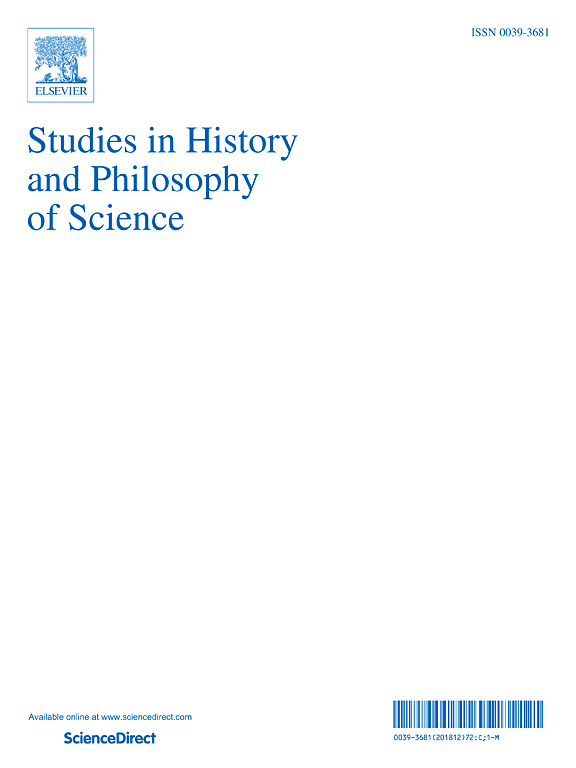
@article{Biener2016b, author = {Biener, Zvi}, category = {Secondary}, date = {2016}, journal = {Studies in History and Philosophy of Science A}, pages = {82--87}, title = {Newton and the Ideal of Exegetical Success.}, volume = {60}, bdsk-url-1 = {https://doi.org/10.1016/j.shpsa.2016.07.001} }———. 2016. “Newton and the Ideal of Exegetical Success.” Studies in History and Philosophy of Science A 60: 82–87.
Essay review of William Harper’s Isaac Newton’s Scientific Method: Turning Data into Evidence about Gravity and Cosmology. William Harper’s excellent, difficult, and provocative book, winner of the 2014 Patrick Suppes Prize for Philosophy of Science, is by far the most detailed available account of Newton’s argument for universal gravitation in Book III of the Principia. It should be mandatory reading for philosophers interested in the relation of evidence to theory, as well as technically savvy historians of early modern physics. It should also be recommended to novices. Its chapters are mostly self-contained and its step-by-step approach make it a great companion for first time students of Newton’s System of the World. - Introduction
(with Schliesser, Eric)
In Newton and Empiricism, Oxford University Press (2014)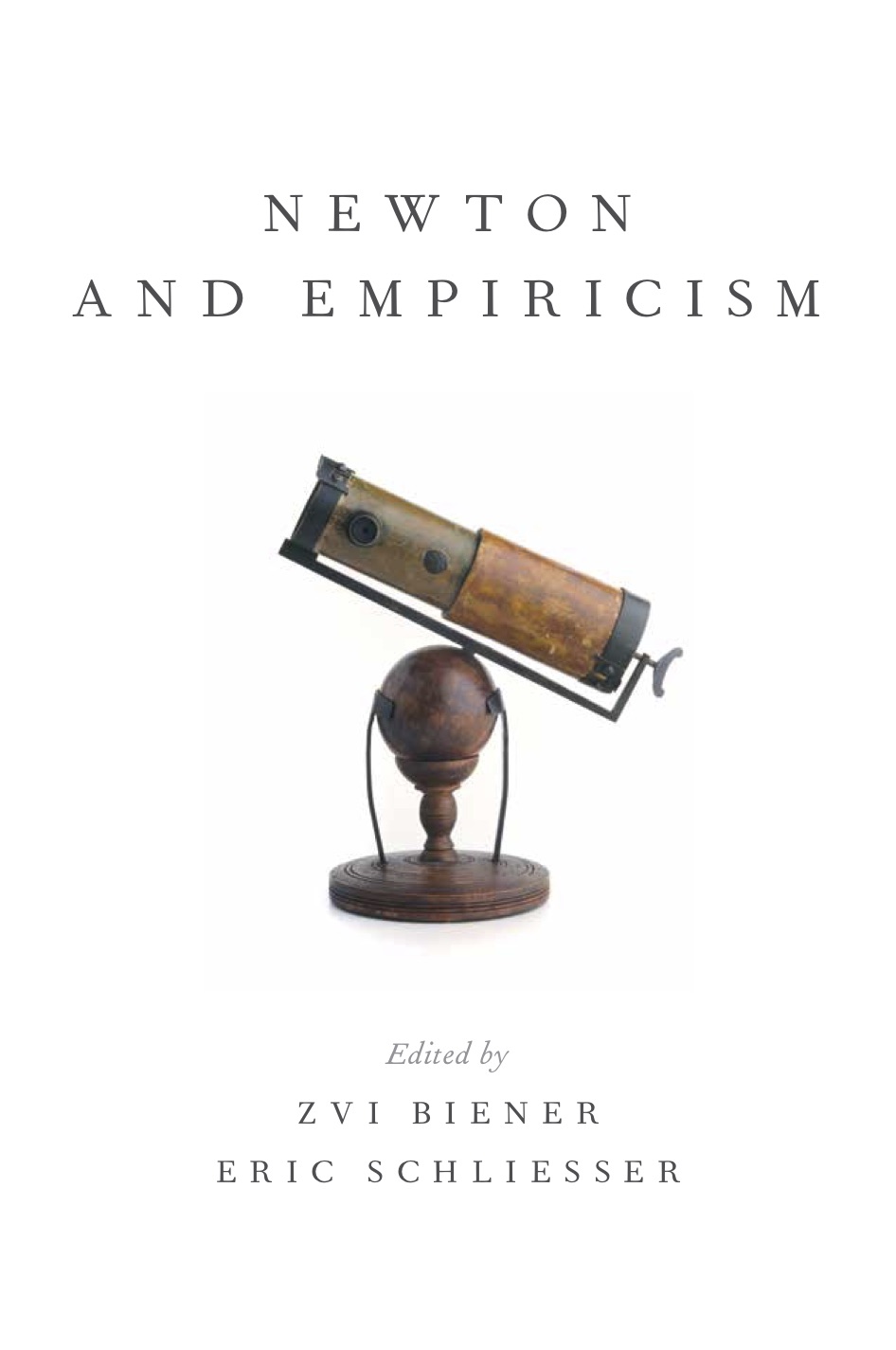
@incollection{biener2013a, author = {Biener, Zvi and Schliesser, Eric}, booktitle = {Newton and Empiricism}, category = {Secondary}, date = {2014}, editor = {Biener, Zvi and Schliesser, Eric}, publisher = {Oxford University Press}, title = {Introduction} }Biener, Zvi, and Eric Schliesser. 2014. “Introduction.” In Newton and Empiricism, edited by Zvi Biener and Eric Schliesser. Oxford University Press.
Sir Isaac Newton’s association with “empiricism”—or rather, the set of traditions that constitutes “empiricism”—was clearly recognized during his lifetime and enshrined by Enlightenment philosophes as ideology after his death. Voltaire, for example, famously identified Newton’s physics and Locke’s metaphysics as the intellectual framework for the Age of Reason. The association became such a significant feature of the intellectual landscape that in the eighteenth century a thinker’s relation to Newton was often a matter of self-definition; by way of affinity or difference, it was a means of locating one’s advertised position in the philosophical spectrum. The influence of naturalistic and experimentalist thought on Newton was similarly well known. Roger Cotes highlighted it in his polemical preface to the Principia’s second edition. And Newton himself, although he cited sources only sparingly, explicitly affiliated himself in the Principia with the mathematical-experimental tradition of Galileo and Huygens. Moreover, from the 1690s onward Newton used language borrowed from the Baconian/Boylean experimental tradition; and, as the first Part of this volume demonstrates, his first opti- cal works were set in a Baconian natural-historical mold and were read as such by his contemporaries and successors. Yet the coupling of Newton and empiricism is not without problems.... - Cotes’s Queries: Newton’s Empiricism and Conceptions of Matter
(with Smeenk, Christopher)
In Interpreting Newton: Critical Essays, (2012)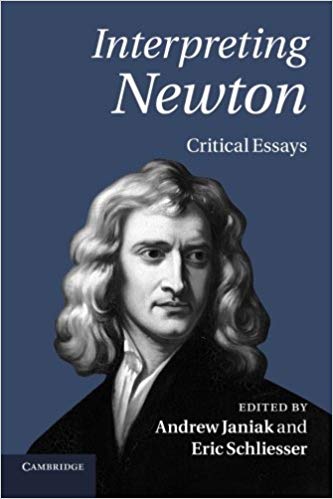
@incollection{Biener2012, author = {Biener, Zvi and Smeenk, Christopher}, booktitle = {Interpreting Newton: Critical Essays}, category = {Secondary}, crossref = {JaniakSchliesser2012a}, date = {2012}, pages = {103--137}, title = {Cotes's Queries: Newton's Empiricism and Conceptions of Matter} }Biener, Zvi, and Christopher Smeenk. 2012. “Cotes’s Queries: Newton’s Empiricism and Conceptions of Matter.” In Interpreting Newton: Critical Essays, 103–37.
We investigate the relation of Newton’s natural philosophy to his method of inquiry, as it concerns Newton’s ideas about the nature and measure of matter. We argue that a conflict between two conceptions of “quantity of matter” employed in a corollary to proposition III.6 illustrates a deeper conflict between Newton’s view of the nature of extended bodies and the concept of mass appropriate for the Principia. It illustrates Newton’s deep struggles with the concepts appropriate for his physics and their empirical justification. - Galileo’s First New Science: The Science of Matter
Perspectives on Science (2004)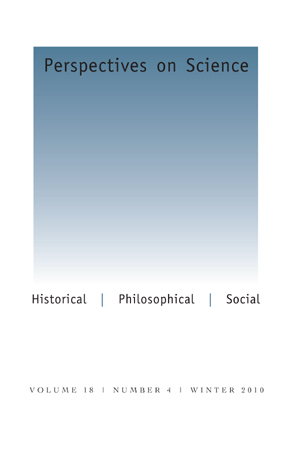
@article{Bien04, author = {Biener, Zvi}, category = {Secondary}, date = {2004}, journal = {Perspectives on Science}, number = {13}, pages = {262--287}, title = {Galileo's First New Science: The Science of Matter}, volume = {12}, bdsk-url-1 = {https://doi.org/10.1162/1063614042795462} }Biener, Zvi. 2004. “Galileo’s First New Science: The Science of Matter.” Perspectives on Science 12 (13): 262–87.
Although Galileo’s struggle to mathematize the study of nature is well known and oft discussed, less discussed is the form this struggle takes in relation to his first new science, the science of the second day of the Discorsi. I argue that Galileo’s first science ought to be understood as the science of matter—not, as it is usually understood, the science of the strength of materials. This formulation sheds light on the convoluted structure of the Discorsi’s first day. It suggests that the day’s meandering discussions of the continuum, infinity, the vacuum, and condensation and rarefaction establish that a formal treatment of the “eternal and necessary” properties of matter is possible; i.e., that matter as such can be considered mathematically. This would have been a necessary, and indeed revolutionary, preliminary to the mathematical science of the second day because matter itself was thought in the Aristotelian tradition to be responsible for the departure of natural bodies from the unchanging and thus mathematizable character of abstract objects. In addition, the first day establishes that when considered physically, these properties account for matter’s force of cohesion and resistance to fracture. This essay closes by showing that this dual style of reasoning accords with the conceptual structure of mixed mathematics. - Pendulums, Pedagogy, and Matter: Lessons from the editing of Newton’s Principia
(with Smeenk, Christopher)
Science & Education (2004)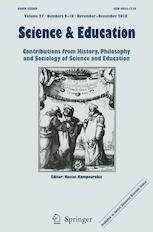
@article{BienSmeen04, author = {Biener, Zvi and Smeenk, Christopher}, category = {Secondary}, comment = {Reprinted in Matthews, M.R., Gauld, C.F. \& Stinner, A. (eds.) (2005). \emph{The Pendulum: Scientific, Historical, Philosophical and Educational Perspectives}, Springer, Dordrecht.}, date = {2004}, journal = {Science {\&} Education}, pages = {309--320}, title = {Pendulums, Pedagogy, and Matter: Lessons from the editing of Newton's Principia}, volume = {13}, bdsk-url-1 = {https://doi.org/10.1023/B:SCED.0000041825.12956.35} }Biener, Zvi, and Christopher Smeenk. 2004. “Pendulums, Pedagogy, and Matter: Lessons from the Editing of Newton’s Principia.” Science & Education 13: 309–20.
Teaching Newtonian physics involves the replacementof students’ ideas about physical situations with precise conceptsappropriate for mathematical applications. This paper focuses on theconcepts of ‘matter’ and ‘mass’. We suggest that students, likesome pre-Newtonian scientists we examine, use these terms in a waythat conflicts with their Newtonian meaning. Specifically, ‘matter’and ‘mass’ indicate to them the sorts of things that are tangible,bulky, and take up space. In Newtonian mechanics, however, the termsare defined by Newton’s Second Law: ‘mass’ is simply a measure ofthe acceleration generated by an impressed force. We examine therelationship between these conceptions as it was discussed by Newtonand his editor, Roger Cotes, when analyzing a series of pendulumexperiments. We suggest that these experiments, as well as moresophisticated computer simulations, can be used in the classroom tosufficiently differentiate the colloquial and precise meaning of theseterms.
Shorter Articles
- Interdisciplinarity, Integration, and Revolution in the Mechanical Philosophy
The Center for West European Studies (2005)
@article{Biener2005a, author = {Biener, Zvi}, category = {Secondary}, date = {2005}, journal = {The Center for West European Studies}, kind = {short}, pages = {3}, title = {Interdisciplinarity, Integration, and Revolution in the Mechanical Philosophy} }Biener, Zvi. 2005. “Interdisciplinarity, Integration, and Revolution in the Mechanical Philosophy.” The Center for West European Studies, 3.
Centuries before official organs such as the European Union aimed to integrate the culturally and economically heterogeneous regions of Western and larger Europe, European intellectual integration was de facto achieved by networks of personal correspondence and manuscript exchange. One of these networks was shaped by the migration of Italian scientific texts produced in the latter years of the Italian Renaissance to Paris.... - Physics
(with Machamer, Peter)
In Encyclopedia of the Early Modern World, Charles Scribner’s Sons (2004)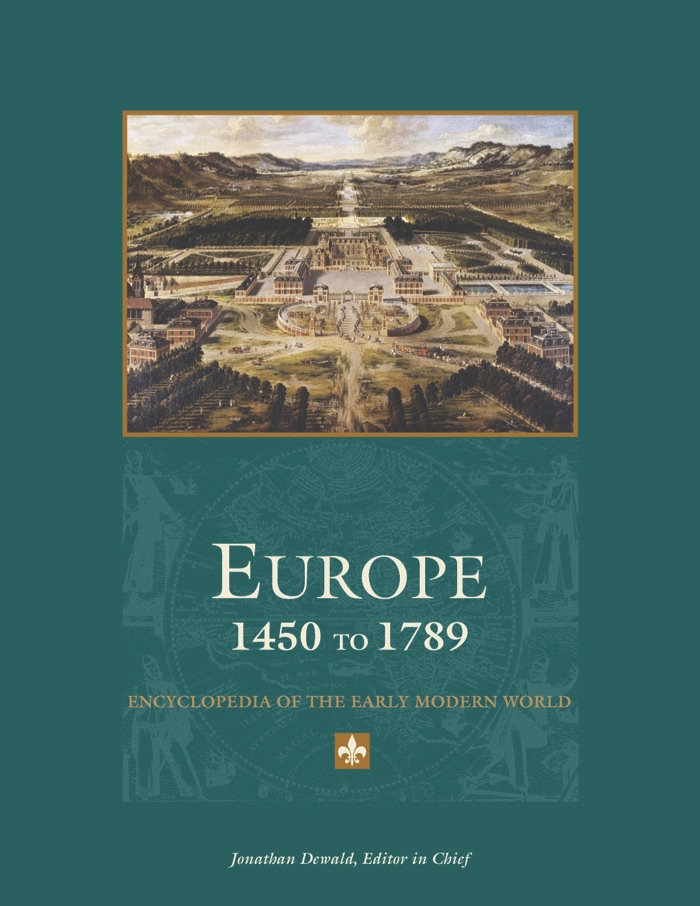
@incollection{Biener2004a, address = {New York}, amazon = {https://www.amazon.com/Europe-1450-1789-Encyclopedia-Modern/dp/068431200X}, author = {Biener, Zvi and Machamer, Peter}, booktitle = {Encyclopedia of the Early Modern World}, category = {Secondary}, date = {2004}, editor = {Dewald, Jonathan}, kind = {short}, pages = {467--473}, publisher = {Charles Scribner's Sons}, title = {Physics}, volume = {4} }Biener, Zvi, and Peter Machamer. 2004. “Physics.” In Encyclopedia of the Early Modern World, edited by Jonathan Dewald, 4:467–73. New York: Charles Scribner’s Sons.
Physics, as a structured mathematical and experimental investigation into the fundamental constituents and laws of the natural world, was not recognized as a discipline until late in the early modern period... - Review of I. B. Cohen and George Smith (eds.) The Cambridge Companion to Newton
(with Smeenk, Christopher)
In Notre Dame Philosophical Reviews, (2003)
@incollection{BienSmeen03, author = {Biener, Zvi and Smeenk, Christopher}, booktitle = {Notre Dame Philosophical Reviews}, category = {Secondary}, date = {2003}, editor = {Gutting, Gary}, keywords = {Newton}, kind = {short}, title = {Review of I. B. Cohen and George Smith (eds.) \emph{The Cambridge Companion to Newton}}, url = {https://ndpr.nd.edu/news/the-cambridge-companion-to-newton/}, bdsk-url-1 = {http://ndpr.icaap.org} }Biener, Zvi, and Christopher Smeenk. 2003. “Review of I. B. Cohen and George Smith (Eds.) The Cambridge Companion to Newton.” In Notre Dame Philosophical Reviews, edited by Gary Gutting. https://ndpr.nd.edu/news/the-cambridge-companion-to-newton/.
For over three centuries, Newtonian science has provided the backdrop for discussions of the epistemological and ontological implications of empirical science. Philosophers interested in the impact of Newtonian science on the development of philosophy thus face the daunting task of teasing the historical truth from three centuries of elaborations and myths regarding Newton and his intellectual legacy. The current volume has the explicit dual goal of peeling away a number of prevailing misconceptions and introducing Newtonian science to a philosophical audience. In both regards, it is a success. The Companion is bound to become a standard reference work, and it is indispensable for scholars and newcomers interested in 17th and 18th century natural philosophy.
Selected Talks & Presentations
- Isaac Newton and the Early Historiography of Mechanics.
2023-05. The Mechanization of Nature 1300-1700 Conference. University of Stockholm.
- How Worry about Light Created Modern Physics
2023-04. Light and life: From basic science to human wellbeing, art and, architecture. University of Cincinnati .
- Fitter, Stronger, More General: The Multiple Aspirations of Newtonian Induction
2021-11. Philosophy of Science Association Meeting. Baltimore.
- Fitter, Stronger, More General: The Multiple Aspirations of Newtonian Induction
2021-10. Philosophy of Science Association 2020 Meeting. Baltimore. Philosophy of Science Association 2020 Meeting. Baltimore.
- The Multiple Aspirations of Newtonian Induction
Jun 26, 2020. HOPOS 2020.. Cancelled due to COVID.
- AI, Skill, and Human Identity (1st Prize Winner)
2019-04. AI and the Future of (No) Work Colloquium and Talk Competition. University of Cincinnati.
- Newton, Huygnes, and the Non-Problematic Status of Induction in the Principia (Poster Session)
Nov 03, 2018. Philosophy of Science Association Meeting. Seattle, WA.
- When Physics Met Astronomy
Aug 13, 2018. Cincinnati Observatory.*
- Post-Newtonian Mechanical Philosophy.
Jul 27, 2018. Revolutions in the History of Early Modern Philosophy and Science Conference. Iowa State University.
- A Deflationary Account of Newton’s Rule 3
Jul 10, 2018. HOPOS 2020. Groningen, Netherlands.
- A Deflationary Account of Newton’s Rule 3 - It’s A Rebuke of Huygens and a Defense of Simple Induction
2018-07. Atlantic Canada Seminar 2018. Dalhousie University, Halifax, Nova Scotia.
Accepted to the but could not attend.
- Newton, Huygnes, and the Non-Problematic Status of Induction in the Principia
2018-06. &HPS7. Leibniz Universität Hannover, Germany.
- A Deflationary Account of Newton’s Rule 3 - It’s A Rebuke of Huygens and a Defense of Simple Induction
Apr 20, 2018. Early Modern—Saint Louis (EM-STL). St. Louis.
- The Changing Range of Geometrical Definition in Newton’s Metaphysics of Space
2018-02. Southwest Philosophy Workshop. University of New Mexico, Albuquerque, NM.*
- The Global, Local and Universal - Tensions of Scale in Newtonian Natural Philosophy (1687-1720).
2017-07. The 25th International Congress of History of Science and Technology. Rio de Janeiro, Brasil.
- Newton on Geometrical Definitions
2017-07. British Society for Philosophy of Science. University of Edinburgh, Scotland.
- Newton on Geometrical Definitions
2017-06. Department of Logic and Philosophy of Science. UC Irvine.
- Newton on Geometrical Definitions
2017-06. Conference on the Occasion of the 50th Anniversary of Howard Stein’s "Newtonian Spacetime". University of Chicago.*
- De Gravitatione Reconsidered - The Changing Role of Geometrical Definitions in Newton’s Metaphysics of Space
May 13, 2017. New York City Workshop in Early Modern Philosophy. Fordham University, NYC.
- Invited workshop participant
Oct 15, 2016. Pittsburgh-Princeton Descartes Day III. *
- Erasing Hooke from the History of Mechanics
2016-02. Colloquium in Honor of the 350th anniversary of Robert Hooke’s Micrographia. University of Wisconsin-Madison.*
- Seeing with the Eyes and ‘Seeing’ with Math
2016-02. Department of History of Science. University of Wisconsin-Madison.*
- Organizing the Disciplines
Apr 11, 2015. Taft Research Symposium. University of Cincinnati.*
- Was Newton’s Commitment to Absolute Space Relevant for Physics?
2015-03. Ohio State University. *
- Newton and Galileo (and Hooke)
Nov 07, 2014. The Philosophy of Science Association Bi-Annual Meeting. Chicago.
- The Galilean Tradition and Newtonian Mechanics
2014-10. Boston Colloquium for Philosophy of Science. Center for Philosophy & History of Science, Boston University.*
- Newton on the Physiology of Perception
2014-09. 48th Annual Western Michigan University Medical Humanities Conference. Western Michigan University.
- Substance & Property, System & Relation - Metaphysical Orthodoxy in Newton’s Rational Mechanics
2014-07. The History of Philosophy of Science Bi-Annual Conference (HOPOS). Ghent, Belgium.
- Galileo on the Limits of Human Understanding
Apr 25, 2014. Hendrix College, Arkansas. *
- When is Something a Thing? A Puzzle about Newton, Substance, and Space
2013-04. East Tennessee State University. *
- ‘We Cannot Say All of Nature is Not Alive’ - A Physiological Context for Newton’s Search for Causes
2012-05. 49th Annual Cincinnati Philosophy Colloquium - The Life and Mathematical Sciences in Early Modernity. University of Cincinnati.*
- Galileo’s Scientific Engagement with Matter Theory (but Not the Matter Theory You Think)
Apr 29, 2011. Experimental Knowledge and the Deep Structure of the World Conference. Virginia Tech, Blacksburg.*
- Hobbes on Geometry and the Structure of the Sciences
Jul 08, 2010. Galileo, Descartes, Philosophy, Science, Politics and Religion during the Scientific Revolution, a NEH Summer Seminar. Princeton University.
- Cartesian Heterogenous Foundationalism
Oct 17, 2009. Oxford Seminar in Early Modern Philosophy. University of Oxford.
- The Classification of Sciences and Foundationalism
2009-09. Universidade Estadual de Campinas. Brazil.*
- Behind the Geometrical Method
Jul 27, 2009. Bucharest-Princeton Seminar in Early-Modern Philosophy. Romania.
- Mapping the History and Philosophy of Science
2009-06. NSF and the James S McDonnell Foundation Workshop. Indiana University,.*
- Two Dogmas About Newton and Space
2009-03. Integrating History and Philosophy of Science Second Annual Conference. University of Notre Dame.
- Newton’s Empiricism and the Changing Metaphysics of Void
Feb 17, 2009. Lunchtime Talk Series. Western Michigan University.*
- ‘Other sorts of bodies and another sort of vacuum’ - Isaac Newton’s Missing Theory of the Void and the Scope of Experimental Philosophy
Jul 01, 2008. Bucharest-Princeton Seminar in Early-Modern Philosophy. Malancrav, Romania.
- Mixed-Mathematics as a Guide to Cartesian Foundationalism
Jun 19, 2008. The History of Philosophy of Science Bi-Annual Conference (HOPOS). Vancouver, Canada.
- The Limits of Evidential Reasoning in Newton’s Argument for Universal Gravitation (with Chris Smeenk)
2007-06. Newton and/as Philosophy Conference. University of Leiden.*
- How to Start a Revolution by Attending a University - The Importance of the Early-Modern Educational System for the Scientific Revolution
Jan 18, 2005. The Center for West European Studies. Pittsburgh.
- Commentary on Howard Stein’s ‘Newton, Philosophy of Inquiry and Metaphysics of Nature’ (with Chris Smeenk)
2004-04. The American Philosophical Association (APA) Central Division Meeting. Chicago.*
- Galileo and the Problem of Establishing the Middle as Mixed
Dec 14, 2003. The Mid-West Seminar in the History of Early Modern Philosophy. Madison, WI.
- Galileo’s Science of Matter
Jun 04, 2003. The Fourth Athens-Pittsburgh Symposium in the History and Philosophy of Science and Technology - Proof & Demonstration in Philosophy and Science. Greece.
- Does Gravity Feign? (with Chris Smeenk)
2002-06. The International Working Group on the History of Philosophy of Science (HOPOS). Toronto, Canada.
- Mathematics and Philosophy in the Newton-Cotes Correspondence (with Chris Smeenk)
2002-05. The Canadian Society for the History and Philosophy of Science. Canada.